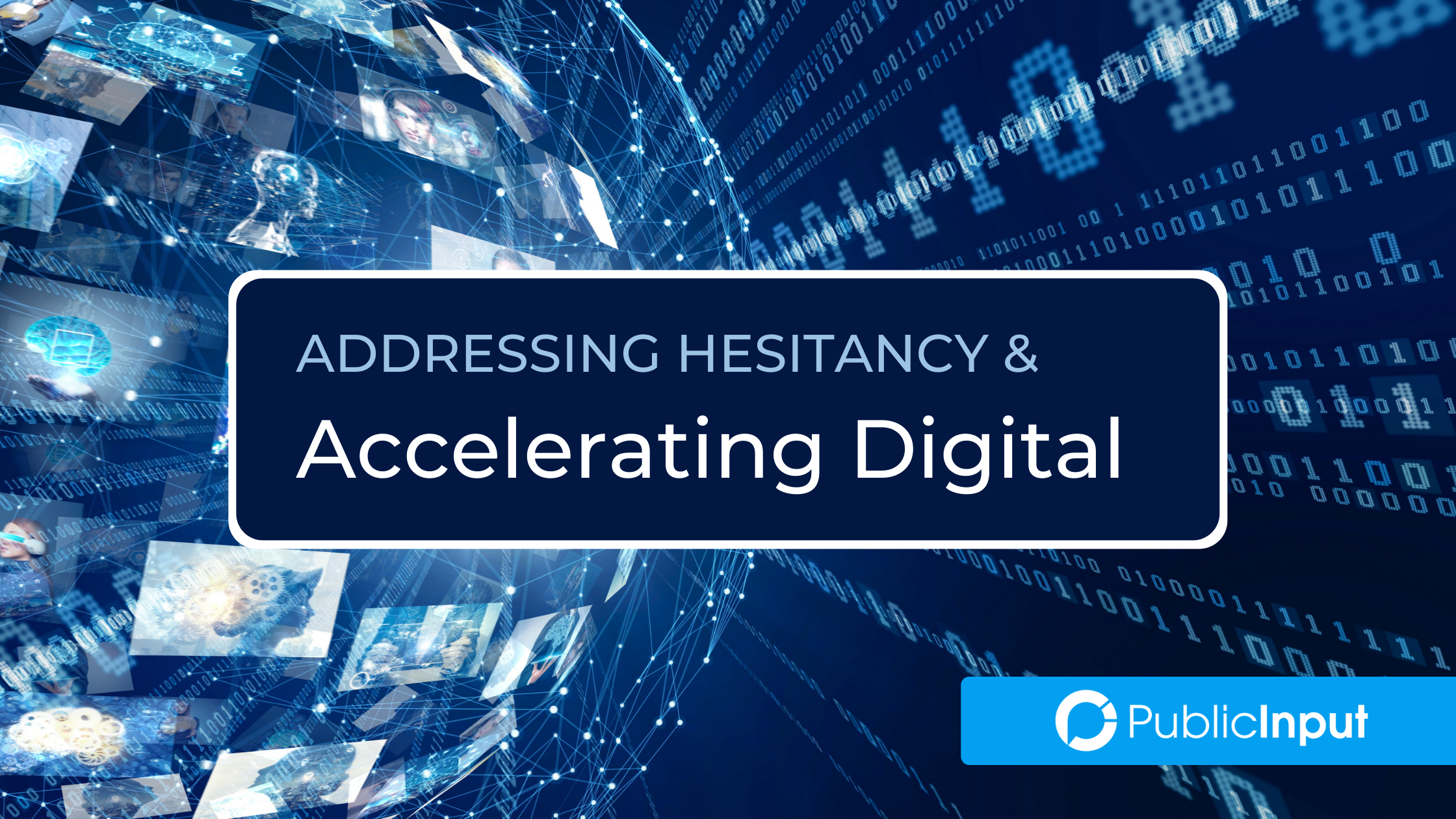
Addressing Hesitancy and Accelerating Digital
With an eye on 2022 and beyond, the lessons of the past 2 years have taught us that the “new normal” is old news and that agility and resilience are the bedrocks of response to the unending tide of change facing public sector engagement.
To say that the business of government is in the midst of a technological transformation would be putting it mildly. According to the IBM Center for The Business of Government . .
This global phenomenon has occurred in the private sector for some time, but has grown more slowly in the public sector. The response to COVID-19, with the shift to remote work and digital engagement, has accelerated the adoption of digitized workflows in government, which will not return to “business as usual” but is still seeking the “next normal.” –IBM Business of Government
When it comes to increasing public trust, we know that outside of mission and legislative platforms, the digital experience is the only driver of trust that can be immediately addressed by governments. With this in mind, it is critical for governments and public sector engagement practitioners to accelerate the rate of adoption of modernizing technologies that leverage smart and innovative solutions.
Addressing Hesitancy through Experimentation
Typical blockers to new technology adoption may include, perceptual barriers (“it would be too hard to change”), hesitancy (“but will it work for us?”), and the varied elements of local capacity. Capacity in particular, whether it be fiscal or human capital, is a formidable barrier with very real challenge implications for government agencies.
Adoption of a new technology can be challenging regardless of the circumstances (trying something new or fixing something broken). Whether it be leaving the comfort of the status quo or responding to unplanned change, the process of exploration and experimentation can be revelatory for those who take the plunge.
According to the IBM Center, the challenges of the past two years have prompted “. . . governments to embrace innovative business models and technologies for operating [more] effectively and efficiently.” This occurrence has resulted in more and more governments leveraging technology “. . . to improve government decision making and services, and ultimately to empower citizens.”
Government agencies using the PublicInput Platform have found that the use of consultant firms is a safe and practical way to experiment with public engagement technology, while mitigating the capacity issues associated with small staffs and limited budgets.
Addressing Capacity with Consultants
Consultants working on public projects are uniquely situated to help government agency teams address some of the natural hesitancy inherent in new technology adoption by absorbing some of the capacity challenges within contracted work.
Whether it be a local municipality that contracts it’s public works or a regional planning organization that commissions a planning study with a consultant firm, the ability to expand departmental and agency capacity is typically the primary driver.
Using consultant contracts to supplement capacity is widely considered in good stewardship of limited public resources particularly at the project level. As a result, the capacity gains governments can achieve through the use of consultancy can be directly translated when experimenting with technology adoption. Whether it is broad use or project specific, consultant-led projects can help provide the cover needed to experiment with smart solutions.
The PublicInput Community
With over 8,000 government projects deployed and counting, the PublicInput community of expert consultant users have helped communities all of the US and Canada leverage the power of technology.
Check out some of our case studies to read more about it!
Yehele & Associates, LLC
Read about how Yehele & Associates, LLC supported the Alaska Department of Transportation to expand their reach to an older rural population by using virtual engagement tactics.
KGBTexas
Read how KGBTexas supported the Harris County Flood Control District to increase access and maintain compliance using virtual tactics.
AECOM
Read about how AECOM assisted the of City San Diego build a foundation for engagement through geo-targeted outreach.



